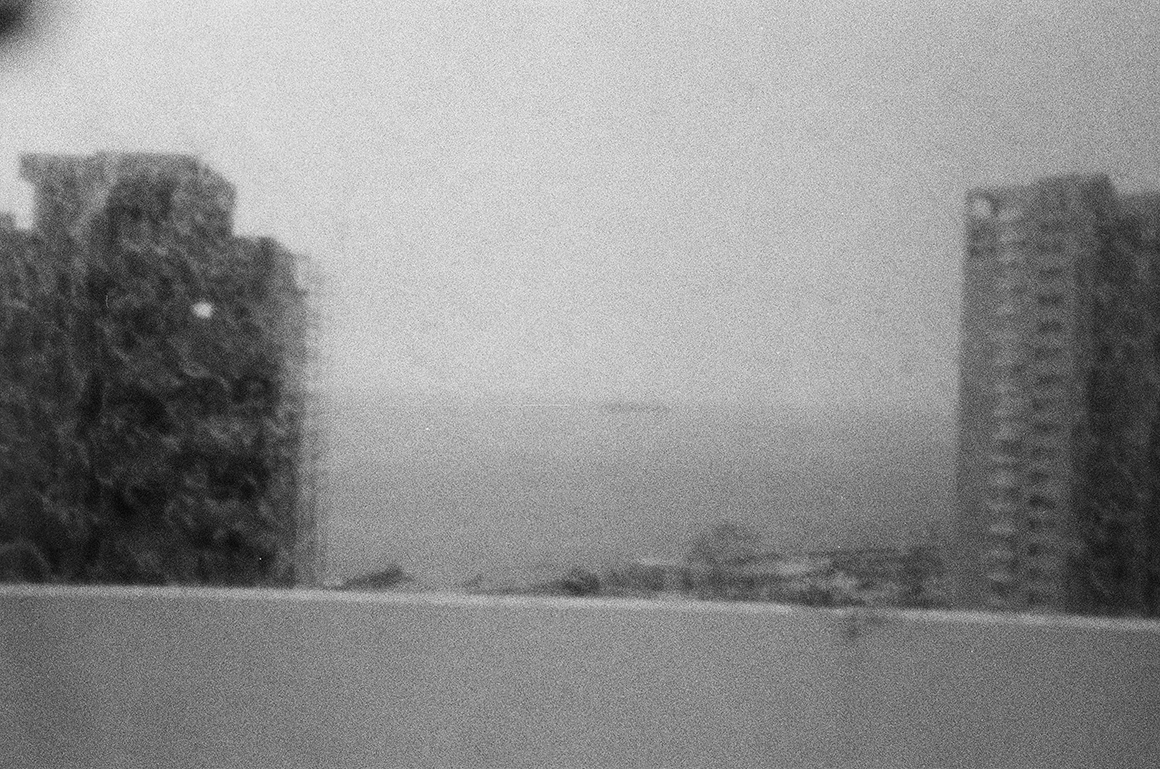Program cancellation
We regret to inform you that the two-day screening program, An Image Before Last, has been cancelled following the request of the participating filmmakers Noor Abed, Batoul Faour, Yazan Khalili, Maissa Maatouk, Walid Raad, Ghassan Salhab, and Ghinwa Yassine to have their films withheld from the program. This also includes the works of Chantal Partamian, which were on display in the Gallery vitrine. The artists have deemed Concordia University a site incompatible for the presentation of their works.
Lynn Kodeih, independent curator of An Image Before Last will continue to develop the program and seek other venues for its presentation. The Gallery respects and supports the decisions made by the curator and artists, who will be releasing their own statements in the coming days.
The Gallery continues its commitment to promoting and supporting Arabic-language art and artists, as well as supporting artistic freedom of expression.
Any questions may be directed to Nicole Burisch, Director.
الصورة ما قبل الأخيرة
ماذا تفعل الصورة عندما ينهار العالم؟
ما الذي يتبقّى من أثرٍ للمرئي بعد اجتثاث المناطق، وتزوير الوثائق، والصمت أمام الإبادة الجماعية، حين يغدو كل ذلك سياسة دولة؟
“الصورة ما قبل الأخيرة” تجمع كوكبة من الأفلام والمقاربات البصرية السردية التي تستدعي الصورة لا بوصفها وثيقة أو إثباتًا، بل فعل مقاومة. برفضها للمنطق الاستعراضي وتسطيح التاريخ، تسعى هذه التجارب إلى إعادة توظيف فعل الاجتثاث ذاته، لصياغة لغة للرفض.
تم اختيار الأعمال من لبنان وفلسطين، لا لقربهما الجغرافي، بل لتطابق الظرف الإنساني، ولاستحالة التعريف بالكارثة دون استعادتها. ما سنختبره هنا لا يقتصر على ما نشاهده أمامنا، بل يشمل أيضًا ما يُحجَب، وما يُبعث، برغم الدمار.
هنا، توقّف الفنّانون عن ملاحقة الحقيقة عبر تمثّلها، إذ غدا فعل التمثّل ذاته مستحيلاً. أصبح “تأطير الصورة” فعلًا للانقضاض على المعنى، حيث يكون الانسحاب هو ما يؤكّد الحضور والفاعلية. فتُترك الصورة المتشظّية لتمنح نفسها الحق في الحداد، وفي خلخلة الواقع، وفي الشهادة بما عجز عنه القانون واللغة معًا.
عقب ما يُسميه بـ”الخراب الذي يفوق الوصف”، فإن المفكر والفنان اللبناني جلال توفيق يرى أن على الفنّانين أن يتخطّوا طور الحداد والتوثيق، ويمضوا أبعد من ذلك. عليهم أن يتصرّفوا كوسطاء، يرمّمون ما انكفأ في أعماقهم، وبروحية منفتحة يقاربون التقاليد والذاكرة، لينهضوا بعدها بطرق لا يمكن التنبؤ بها.
في المقابل، يرى الفنان والكاتب وليد صادق أن “الإبصار بالعمى” هو إدراك بأن ثمة أشياء لا يمكن، بل ربما لا ينبغي، تعريضها كليًا للضوء، على اعتبار أن لتلك الأشياء أخلاقيات وجماليات منضبطة، تقاوم الفرجة كتيار، والبرهان كسطوة، والشفافية كتعَرٍّ. إن النظر بعينين معصوبتين يوحي بأن العنف، حين يبلغ مداه، ينسف الثقة بالبصر؛ فـ”الرؤية” غالبًا ما تعني إساءة الفهم، أو المبالغة في الادعاء، أو حتى المشاركة في الإنكار.
إن مفهوم وليد صادق للرؤية يدعونا إلى إعادة التفكير في الصورة، لا بوصفها كشفًا أو انكشافًا، بل كحيّز يُعلّق فيه العنف، دون أن يُرى تمامًا، ودون أن يُحسم أو يُحلّ، بل يُحتضن في حالته المعلّقة تلك.
استنادًا إلى طروحات جلال توفيق ووليد صادق، يقدّم برنامج العروض أعمالًا لا تُعرّف الصورة بما يُرى، بل بما يتفعّل عبر الرؤية، وعبر الرفض لفكرة “الخاتمة” أو الإدلاء بالشهادة. تنقّب هذه الأعمال، بلا كلل، في ما يمكن للصورة أن تفعله بعد أن تفقد وظيفتها التمثيلية، باعتبارها صورة متكسّرة الوجوه، شديدة الإلحاح، تواصل الاشتغال، حتى وإن بدا ذلك بلا جدوى، على إعادة تركيب اللغة ذاتها. بقواعد لغوية مختلفة للمقاومة.
ضمن برنامج “تموضع الآخر” (Othered Cartographies)، يتوزّع هذا المشروع على أمسيتين من العروض السينمائية، بالإضافة إلى عرضٍ تركيبي بالفيديو يُشاهد على واجهة غاليري ليونارد وبينا إيلين، إلى جانب نقاش يجمع بين منسّقة البرنامج، الفنانة لين قديح، والباحث تامر الشيخ.
Arabic translation by Abeer Dagher Esber
An Image Before Last
Screening Series
Wednesday, August 20, 6:00 PM – 8:00 PM
Wednesday, August 27, 6:00 PM – 8:00 PM
At J.A. DeSève Cinéma
Free, in English & Arabic
What can an image still do when the world collapses? What power remains in the visual when states erase, archives lie, and silence in the face of genocide becomes policy? An Image Before Last gathers a constellation of film and video essays that reclaim the image—not only as document or evidence, but as resistance. Refusing the flattening logics of history and spectacle, these works attempt to repurpose erasure itself, forging a language of refusal.
Set between Lebanon and Palestine, the essays are not selected for being bound by geography, but by a shared condition: the impossibility of representing catastrophe without reinforcing it. Across these works, we encounter not only what is shown, but also what is withheld—what resurfaces despite destruction. Here, artists are no longer in search of truth through representation, for representation itself has become impossible. The frame becomes a site of sabotage, where presence, existence, and agency are often asserted through withdrawal—through the broken image, through its capacity to mourn, to disrupt, to bear witness when both language and law fail.
For Lebanese thinker and artist Jalal Toufic, in the wake of what he calls a “surpassing disaster,” 1 artists must move beyond mourning or documentation. They must act as mediums, recovering what has withdrawn into latency, and reopening the conditions for tradition, memory, and meaning to re-emerge in unforeseen forms. For artist and writer Walid Sadek, to see from a position of “near-blindness” 2 is to recognize that some things cannot—or should not—be brought fully into light. It is an ethics and aesthetics of restraint, working against the grain of spectacle, evidence, and transparency. Looking with blind eyes suggests that, after such violence, the visible is no longer trustworthy—that to “see” is often to misread, overclaim, or participate in denial. Sadek’s concept invites us to rethink the image not as revelation, but as a space where violence is neither fully seen nor resolved, but held in suspension.
Drawing on Toufic’s and Sadek’s propositions, the screening program presents works where the image is not what is seen, but what is activated through the refusal of closure, the refusal of testimony. These are works that tirelessly explore what else the image might do—fragmented, persistent, and working, even in vain, to reconstitute language itself. A different grammar of resistance.
Lynn Kodeih
Part of the program Othered Cartographies, this series of screenings unfolds over two evenings, and includes a video installation hosted in the vitrine of the Leonard & Bina Ellen Gallery, as well as a discussion between artist and curator Lynn Kodeih and scholar Tammer El-Sheikh.
1. Jalal Toufic, The Withdrawal of Tradition Past a Surpassing Disaster (Forthcoming Books, 2009).
2. Walid Sadek, “Tranquility Is Made in Pictures” Fillip, vol 17, Fall 2012. https://fillip.ca/content/tranquility-is-made-in-pictures
Tammer El-Sheikh is an Associate Professor of Art History at York University in Toronto. His scholarly publications have focused on contemporary art in the MENA/SWANA region and its diasporas. He has written feature articles and reviews for Parachute, C Magazine, ETC, Canadian Art, and BlackFlash, and essays for a number of exhibition catalogues both in Canada and abroad. His academic writing has appeared in the journals ARTMargins and Arab Studies Journal, and his first edited volume, titled “Hybrid Bodies: An Anthology of Writings on Art, Identity, and Intercorporeality,” was released in the spring of 2020. El-Sheikh was an editorial resident with Public Parking in 2025.
Lynn Kodeih is an artist and researcher working between Beirut and Tiohtià:ke/Mooniyang/Montréal since 2020. Her practice engages with the politics of the image, examining space, borders, and belonging within the ongoing colonial context. Kodeih’s work adopts intersectional strategies to expose power structures and systemic violence. Kodeih holds degrees in literary studies, theatre, and visual arts from both Lebanese and Canadian institutions. Since 2009, she has lectured and collaborated with various universities and art institutions, including the Leonard & Bina Ellen Gallery as Coordinator of Public Programs and Education (2023–2024), and subsequently as an independent curator and programmer. Her practice has received support through multiple scholarships and grants. She is the recipient of the Powerhouse Prize, the Bronfman 2024 Fellowship, and the Impressions Residency Award from the Montreal Museum of Fine Arts in 2025. Her work has been exhibited nationally and internationally.
CloseAn Image Before Last I
Film screening program, curated by Lynn Kodeih
Wednesday August 20, 6:00 PM – 8:00 PM
DeSève Cinema
Free, in Arabic with English subtitles
Yazan Khalili: On Love and Other Landscapes (2011) 7 min
Noor Abed: our songs were ready for all wars to come (2021) 20 min
Batoul Faour: The Bunker, The Barracks, and The Base (2023) 17 min
Kamal Aljafari: A Fidai Film (2024) 78 min
On Love and Other Landscapes (2011), dir. Yazan Khalili
Photography project, 91 images in sequence
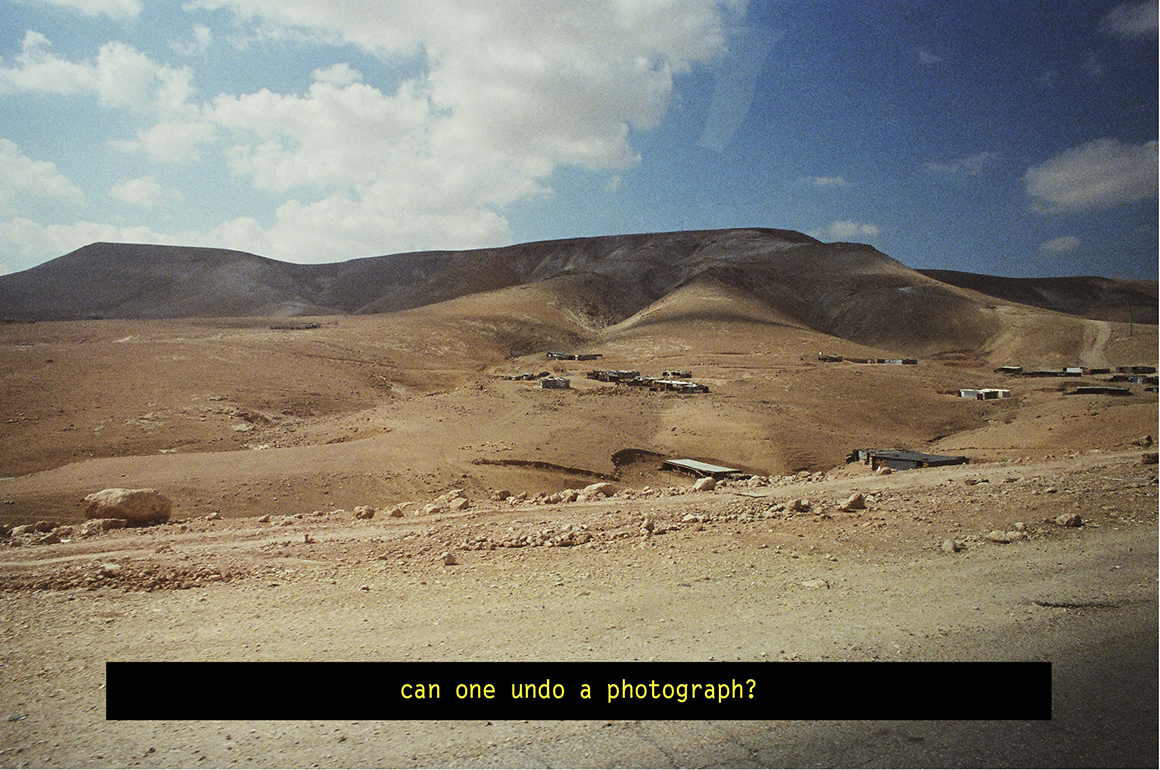
Yazan Khalili, On Love and Other Landscapes (2011), film still. Courtesy of the artist.
This book is a film made in the format of a book, it doesn’t exist as a film, the book is its original and only format.
The film/book follows a narrative of a failed love story, involving a woman who had recently abandoned the narrator and left him with the landscape photographs lacking his presence and the presence of the notorious Israeli-built Wall in the West Bank, an absence which echoes the atmosphere conjured by these images.
This series emerged out of questions relating to the representation of the Wall. Depictions of this Wall have been used and consumed within the Palestinian and global shared visual economy to such an extent that it has lost its power as an image.
Yazan Khalili lives and works in and out of Palestine and The Netherlands. He is a researcher, artist, and cultural producer. His practice frames landscapes, institutions, and social and technological phenomena as politicized entities. He was the director of Khalil Sakakini Cultural Centre in Ramallah (2015–2019), and he co-founded different platforms of infrastructures for cultural practices, The Question of Funding in 2019, and Radio Alhara in 2020. He is currently a PhD candidate at ASCA, University of Amsterdam.
our songs were ready for all wars to come (2021), dir. Noor Abed
Super 8mm film (colour, sound), 20 min
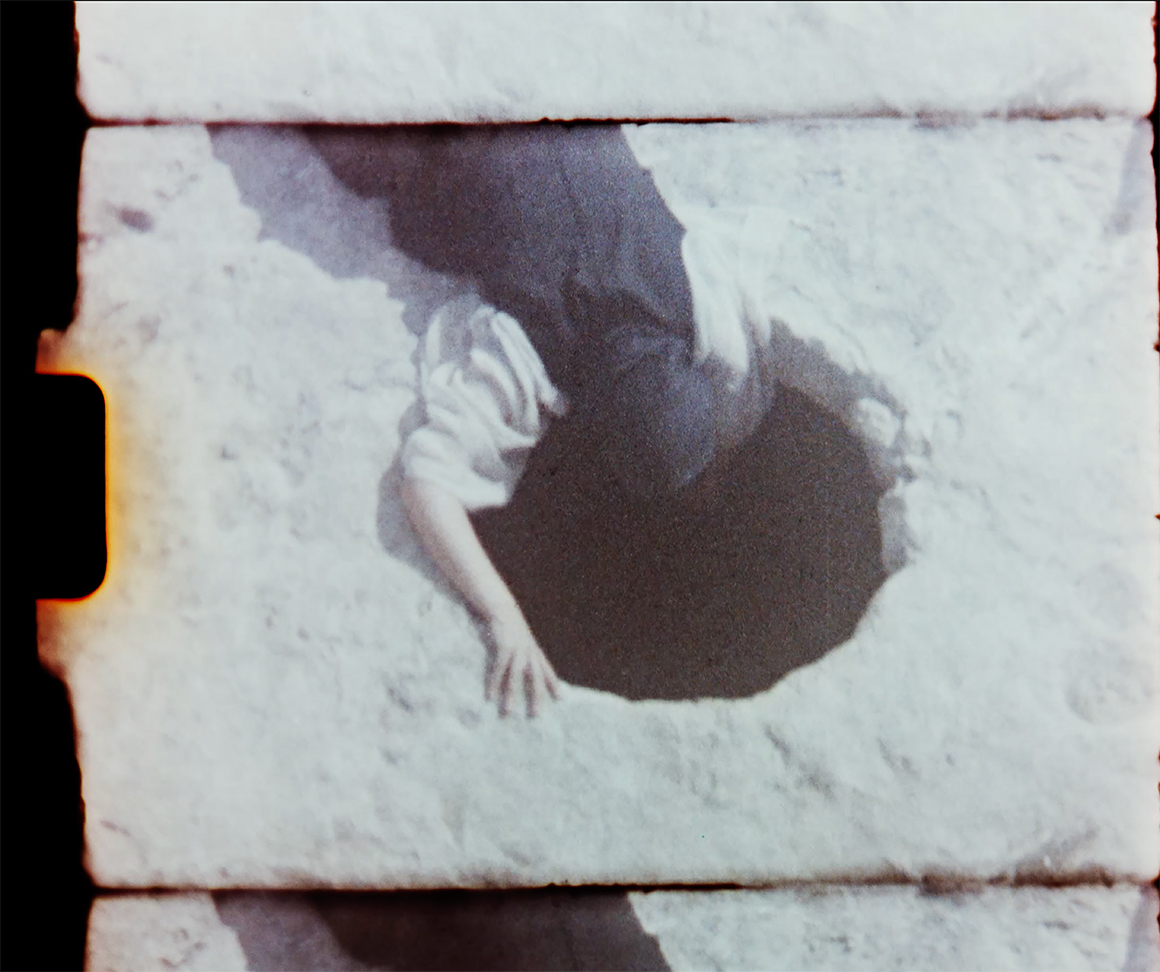
Noor Abed, our songs were ready for all wars to come, super 8mm film still, 2021. Courtesy of the artist
Choreographed scenes based on documented folktales from Palestine, the film aims to create a new aesthetic form to re-awaken latent stories based around water wells and their connection to communal rituals around notions of disappearance, mourning, and death. our songs were ready for all the wars to come explores the critical stance of ‘folklore’ as a source of knowledge, and its possible connection to alternative social and representational models in Palestine. How can ‘folklore’ become a common emancipatory tool for people to overturn dominant discourses, reclaim their history and land, and rewrite reality as they know it?
The only narration in the film is a song, which is sung by Palestinian singer Maya Khaldi. Its lyrics are a collage of different folk tales. Captured through mediums of film and sound, situated stories are archived and represented, creating a context that explores the capacity of social formation, and the possibility of recalling a memory that is capable of decentralizing images of fixity; a memory that is liberated from monuments.
Noor Abed (Palestine) works at the intersection of performance and film, combining forms of the ‘staged’ and the ‘documentary.’ Her practice examines notions of social choreographies and collective formations, searching through the connection between the notion of ‘synchrony’ and social action. In 2020, she co-founded, with Lara Khaldi, the School of Intrusions, an independent educational collective in Ramallah, Palestine. Abed was an assistant curator of documenta fifteen, Kassel 2021-22, an artist in residence at the Rijksakademie in Amsterdam 2022-24. Her book Stars at Midday was published by Occasional Papers in October 2024.
The Bunker, The Barracks, and The Base (2023), dir. Batoul Faour
Three-channel video installation, 18 min.
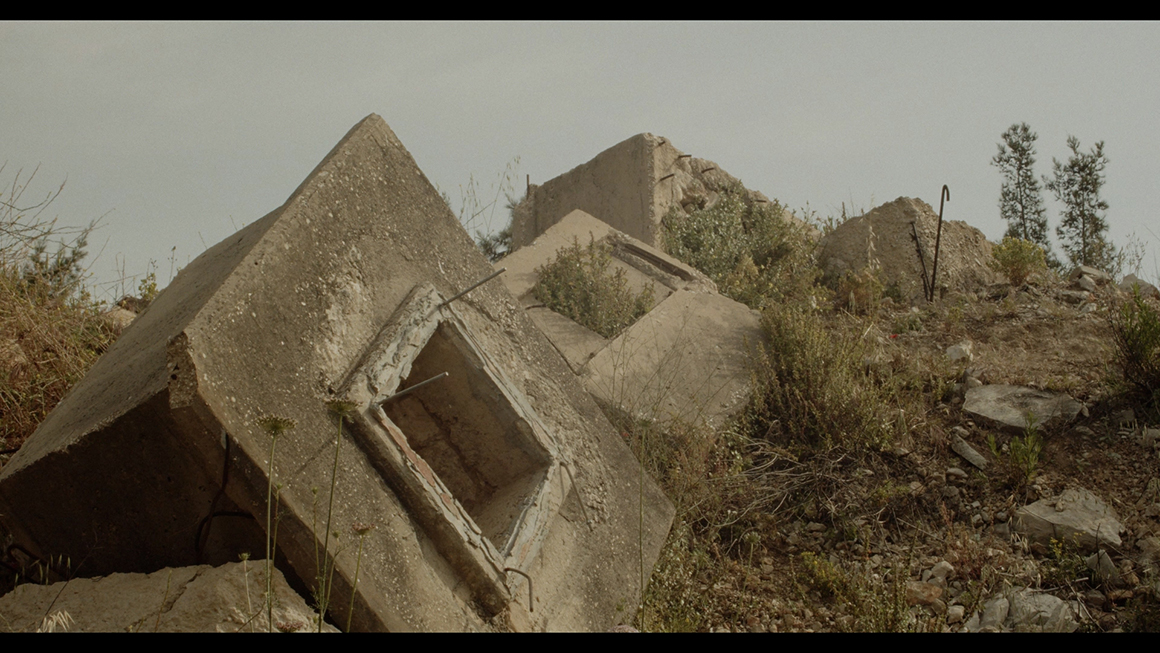
Batoul Faour, The Bunker, The Barracks, and The Base (2023), three-channel video installation, 18 min. Courtesy of the artist.
Towards the end of the Second World War, French and British forces fortified the Khiam Marjayoun valley and its surrounding villages in the South of Lebanon through a comprehensive military scheme. At the core of this scheme were three structures – a hospital bunker, an airbase, and a military barracks. After the retreat of the allies came the establishment of the State of Israel, and the political turmoil that would follow.
The Bunker, The Barracks, and The Base (2023) is a portrait of collective remembrance in a landscape where invasion and occupation have shaped the lives of many generations. It explores the three architectural sites through the experiences of those who have come to inhabit them beyond their militaristic ambitions. The relationship of these sites to the land, to each other, and to the border that mediates them is rife with contradiction, and yet what binds them are the histories—memories, spirits, outlooks—of those that have learned to make a life through, with, and despite them.
Batoul Faour is an architect and visual artist. Her work operates at the intersection of politics, spatial histories, and media—blending a journalistic, documentary approach with the empirical and the architectural. These are methods she is interested in employing within and around dimensions of colonialism, migration and displacement, state and occupational violence, infrastructures, and other power systems. She is a recipient of the 2021 Avery Review Essay Prize for her research on glass in the aftermath of the Beirut explosion. She holds a MArch from the University of Toronto where she was previously an instructor, and a BArch from the American University of Beirut, where she currently teaches.
A FIDAI FILM (2024), dir. Kamal Aljafari
Film (colour, black and white, sound), 78 min.
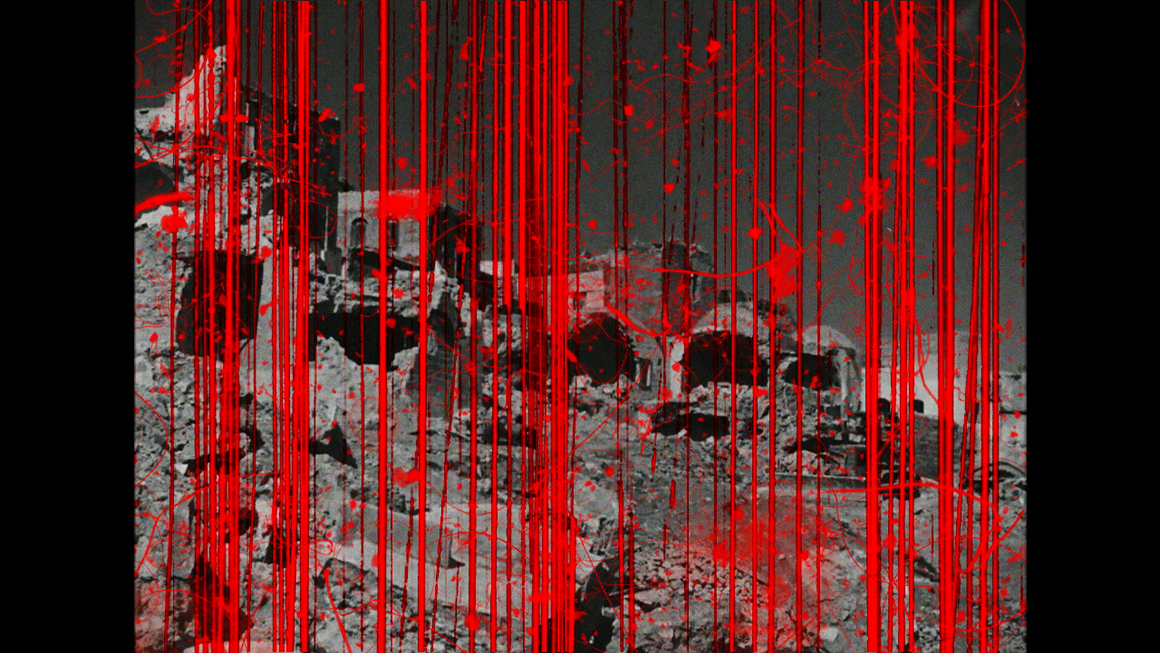
Kamal Aljafari, A Fidai Film (2024), DCP 2K, Colour/B&W, 78 min. Courtesy of the artist.
In the summer of 1982, the Israeli army invaded Beirut. During this time, it raided the Palestinian Research Center and looted its entire archive. The archive contained historical documents of Palestine, including a collection of still and moving images. Taking this as a premise, A Fidai Film explores the visual memory of this looting and appropriates images now in the hands of Israeli archives.
Kamal Aljafari is a Palestinian filmmaker and artist. His films have screened at major festivals and museums, including Locarno, London, Viennale, and the 35th Bienal de São Paulo. He has received prestigious awards from FIDMarseille, Pesaro, and Visions du Réel. In 2024, IndieLisboa hosted a full retrospective of his work. Aljafari has taught at The New School and DFFB in Berlin and was a Film Study Center fellow at Harvard. Currently a fellow at Columbia University’s Institute for Ideas and Imagination, he is developing “Beirut 1931,” a fiction film to be shot in Jaffa.
CloseAn Image Before Last II
Film screening program, followed by a discussion with Lynn Kodeih and Tammer El-Sheikh
Wednesday August 20, 6:00 PM – 8:00 PM
DeSève Cinema
Free, in Arabic with English subtitles.
Maissa Maatouk: Floating lights I: Fall of the state (2022) 4 min
Maissa Maatouk: Floating lights II: Rise of corporations (2023) 11 min
Ghinwa Yassine: A Dream Pointing to Aadchit (2025) 17 min
Ghassan Salhab: No Title (2025) 40 min
Walid Raad: I only wish that I could weep (2002) 7 min
Floating Lights (2022 –), dir. Maissa Maatouk
The Floating Lights (2022-) series stems from an ongoing cartographic video practice, focusing on the infrastructural dimension of the collapse, namely on the ways in which the blackout affects the city and our perceptive modalities in and of the city. As the informal, private economies and DIY infrastructures rapidly established throughout Beirut rapidly change in response to the collapse, every year, the artist captures a sequence of her ballad while driving around the city at night. With every new sequence, the artist re-examines and underlines the aesthetic and political change that is deriving from the state of management of Beirut’s infrastructure.
Floating Lights I: Collapse of the State (2022), dir. Maissa Maatouk
Video, 4 min. 52 sec.
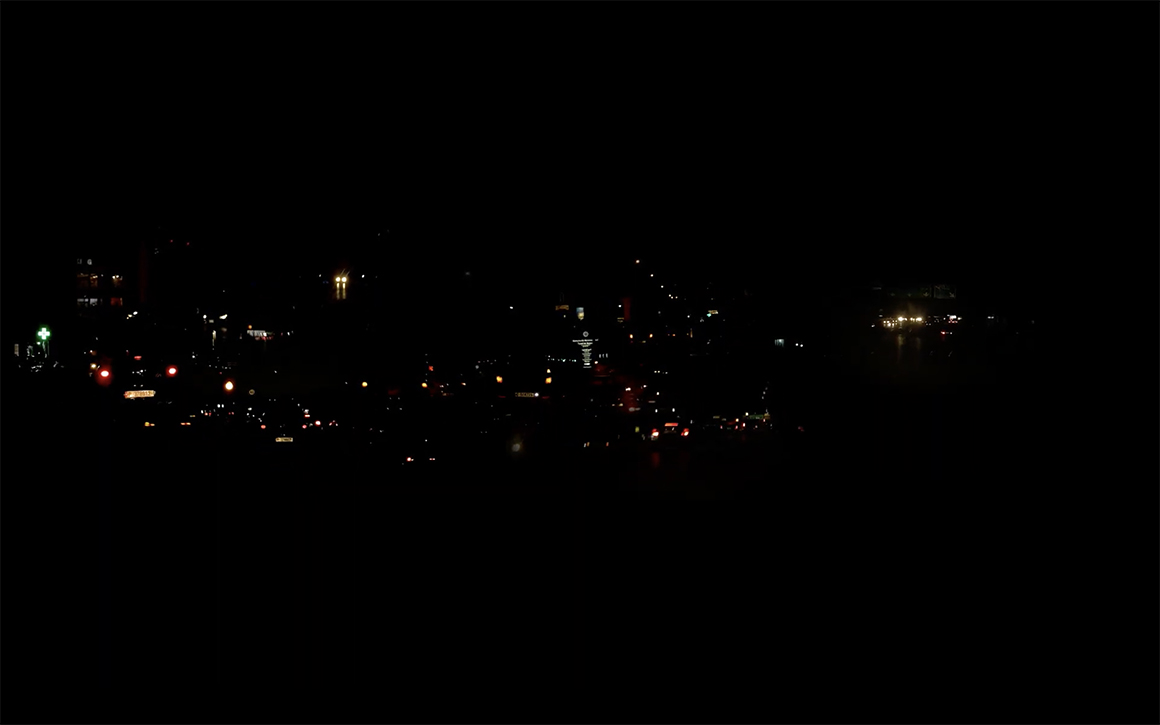
Maissa Maatouk, Floating Lights I: Collapse of the State (2022), video, colour, 4 min. 52 sec.
Filmed during the total electricity blackout of 2021, Maatouk filmed a single traveling sequence to capture the remaining flickering lights in the city mainly coming from cars. The work that transpired is a tableau that uses sections from the footage taken that night. Darkness becomes the paste that holds all the fragmented parts of Beirut together, it is the potential to form a unity between places divided by the sectarian grid. All these sections each carry its own rhythm resulting in a unified condition with a dispersed effect.
Floating Lights II, Rise of corporations (2023), dir. Maissa Maatouk
Video, 12 min. 37 sec.
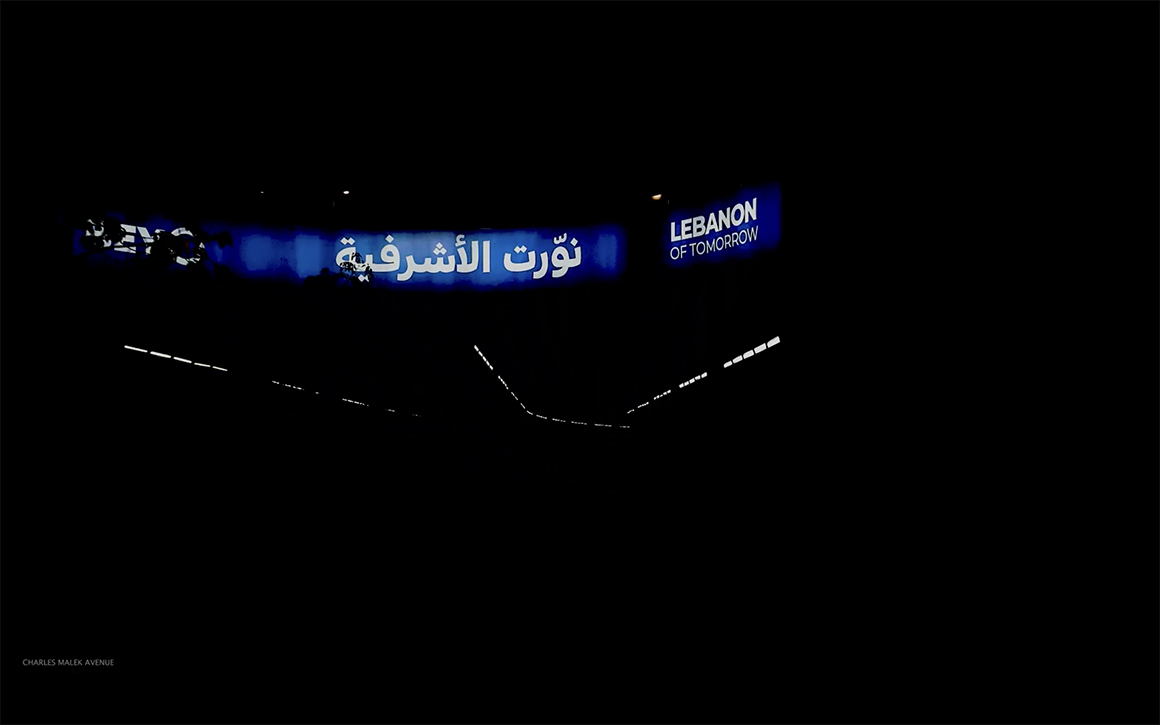
Maissa Maatouk, Floating Lights II: Rise of Corporations, video, colour, sound, 12 min. 37 sec.
In 2023, streetlights emerged in some parts of Beirut. The void left by the public sector led NGOs, politicians, and individuals to install new streetlights by connecting them to private generators or solar panels. The fragmented logic of urban lighting is visible in the different colour temperatures of streetlights. The video suggests that these lights illuminate nothing but themselves and produce a black background that connects streets lit by similar colour temperatures. The result is a continuous sequence and the possibility to travel seamlessly between different parts of the city that are usually physically distant from one another.
Maissa Maatouk (b. 1992, Beirut) is an artist living and working in Beirut. She graduated with degrees in product and global design from the Académie Libanaise des Beaux-Arts (ALBA), Beirut (BA, 2014; MA, 2017). Her recent projects tackle perception during the recent Lebanese collapse. She was a 2019–2020 fellow in Ashkal Alwan’s Home Workspace Program in Beirut and has been a resident at the Junge Akademie (Akademie der Künste) (2022), Saradar Foundation (2023), and Akademie Schloss Solitude (2023). She has shown her work in Lebanon, USA, Germany, Austria, and France. Her most recent video work, Floating Lights, was part of the exhibition Foreshadows, curated by Reem Shadid at the Beirut Art Center (2024).
A Dream Pointing to Aadchit (2025), dir. Ghinwa Yassine
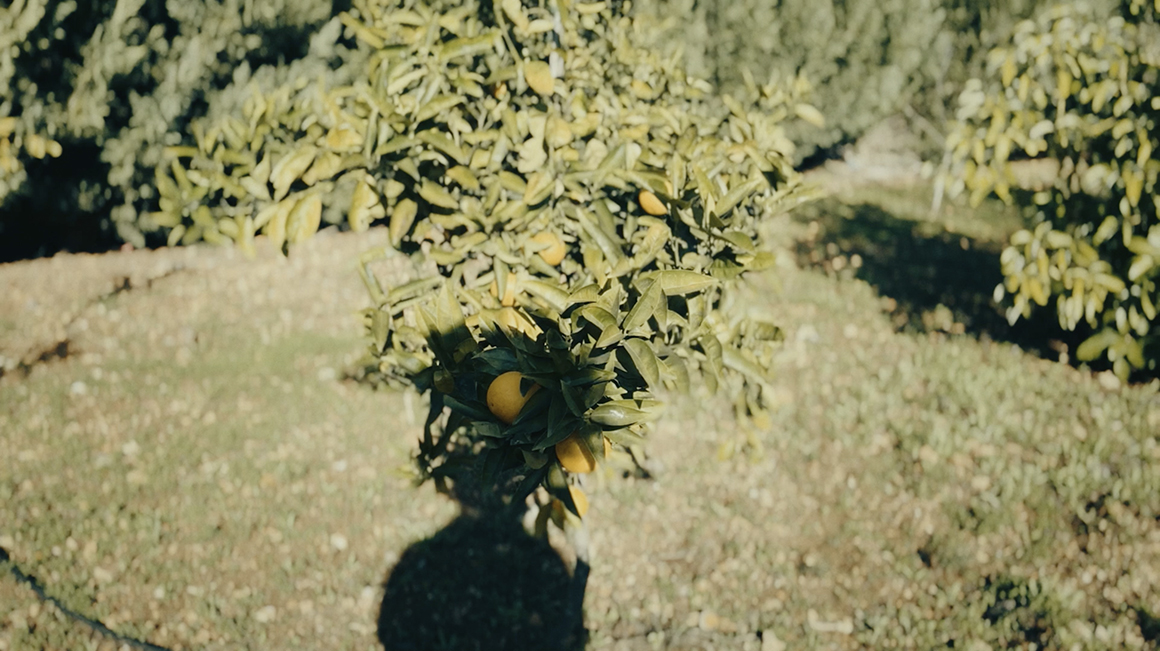
Ghinwa Yassine, A Dream Pointing to Aadchit (2025). Courtesy of the artist.
Haunted by a recurring dream of her grandfather turning the soil around a tree in her childhood garden, G returns to Aadchit, a small village in South Lebanon. What she finds is not the dream—but something calmer, more weathered.
In this father-daughter road trip, land becomes a palimpsest—memories erased, overwritten by hope. Through conversations with her father, neighbours, and family, G unearths fragments of a past not entirely lost.
This film is a lyrical meditation on war and its echoes—on ruins, beauty, busy ants, burnt trees, and the soft resistance of the earth. A story of loss, life, and land. Aadchit, a site of return, a place where even debris carries the shape of love.
Ghinwa Yassine is an anti-disciplinary artist, art educator, and cultural producer based on the land of the Musqueam, Squamish, and Tsleil-Waututh people, so-called Vancouver. Her work uses various media, including film, installation, performance, text, and drawing. She was born and raised in Beirut, Lebanon, worked in Dubai and London, studied in the Netherlands, and moved to Vancouver in 2017. Her work has been exhibited in galleries in the Netherlands, Lebanon, UAE, Canada, Iran, and Croatia. Ghinwa has an extensive background in education, brand design and strategy, project management, and event planning and production, and is currently in the role of co-executive director with MENA Film Festival.
No Title (2025), dir. Ghassan Salhab
Video (colour, sound), 42 min.
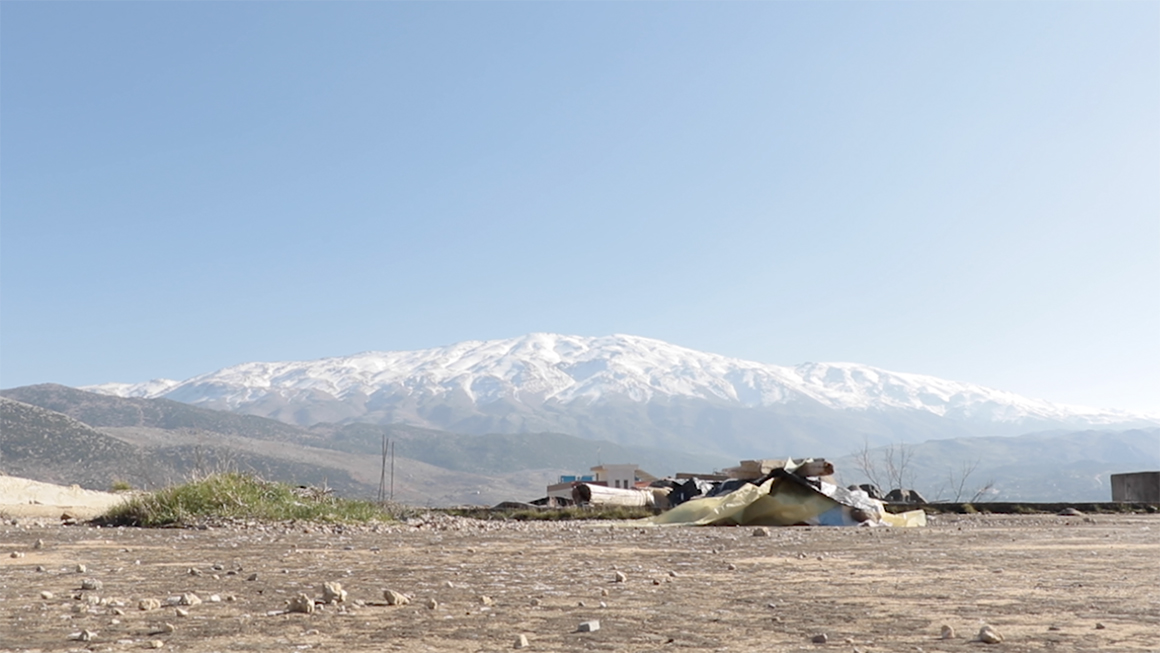
Ghassan Salhab, No Title (2025), video (colour, sound), 42 min. Courtesy of the artist.
Disaster ruins everything while leaving everything as it is, wrote Maurice Blanchot. Everything.
From the southern districts of Beirut to southern Lebanon, a car winds its way through the devastated country. No title for such desolation.
Ghassan Salhab was born in Dakar, Senegal, in 1958. In addition to making his own films, he collaborates on various scenarios and teaches film in Lebanon. He has directed 9 full-length films: Beyrouth Fantôme (1998), Terra Incognita (2002), The Last Man (2006), 1958 (2009), The Mountain (2010), The Valley (2014), An Open Rose/Warda (2019), The River (2021) and Contretemps/Day is Night (2024)… in addition to numerous “essays,” including (Posthumous) (2007), Chinese Ink (2016), Son Image (2016), and Le voyage immobile (2018), with Mohamed Soueid.
La Rochelle International Film Festival, JCC Carthage, La Cinémathèque Québécoise, Festival internacional de cine Guanajuato, Cinéma Saint-André des Arts in Paris and le Cinéma du Réel made a tribute to his work. He has also published different texts and articles in various magazines, and two books: Fragments du ivre du naufrage and À contre-jour.
I Only Wish That I Could Weep (2002), dir. Walid Raad
Video, colour, 7 min 36 sec
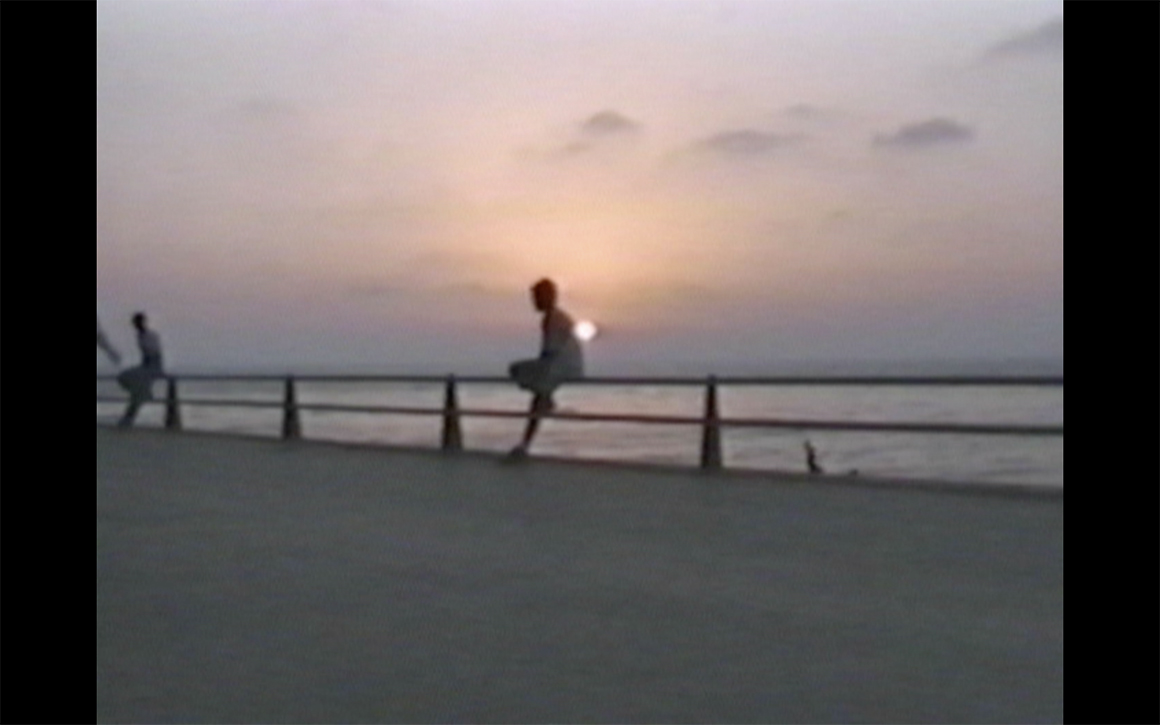
Walid Raad, I Only With That I Could Weep (2002), video, colour, 7 min 36 sec.
This document is attributed to a Lebanese Army intelligence officer, Operator #17, who was assigned to monitor the Corniche, a seaside boardwalk in Beirut. From 1996 on, and for some unknown reasons, the officer decided to videotape the sunset instead of his assigned targets. This videotape, donated by Operator #17 to The Atlas Group in 1998, recounts the operator’s experiences on the Corniche.
Walid Raad is, in part, an artist and a Professor of Photography at Bard College (Annandale-on-Hudson, NY, USA). The list of exhibitions (good, bad and mediocre ones); awards and grants (merited, not merited, grateful for, rejected and/or returned); education (some of it thought-provoking; some of it, less so); publications (I am fond of some of my books, but more so of the books of Jalal Toufic. You can find his here: jalaltoufic.com), can be found somewhere online.
CloseAn Image Before Last (الصورة ما قبل الأخيرة) is part of Othered Cartographies: On Place and Presence, a multi-part public program curated by Lynn Kodeih.
هو برنامج بعدة أجزاء، يشتبك مع التعقيدات وتعدد المعاني المؤسسة لمجموعات الشتات في مونتريال، المدينة التي شكلها تاريخها الاستعماري، والهجرات، والمسارات المتداخلة ثقافياً لحاملي نسبها. يسعى البرنامج إلى خلق مساحات وموارد مستمدة من التجارب المعرفية المعاشة للمجتمعات التي غالبًا ما تُترك على هامش السرديات المؤسسية
Othered Cartographies: On Place and Presence is a multi-part public program that engages with the layered meanings, complexities, and transformative possibilities of diasporas in Montreal—a city shaped by histories of colonization, migration, and overlapping trajectories and cultural lineages. The program seeks to nurture spaces and resources informed by the lived experiences and knowledge of communities often left at the edges of institutional narratives.
This project builds on a legacy of past public programming at the Gallery—one that has long embraced critical, community-responsive approaches to knowledge-sharing and cultural work. Undertaken by artist – researcher Lynn Kodeih, the project continues this trajectory, deepening the Gallery’s commitment to practices that listen closely and act collectively.






